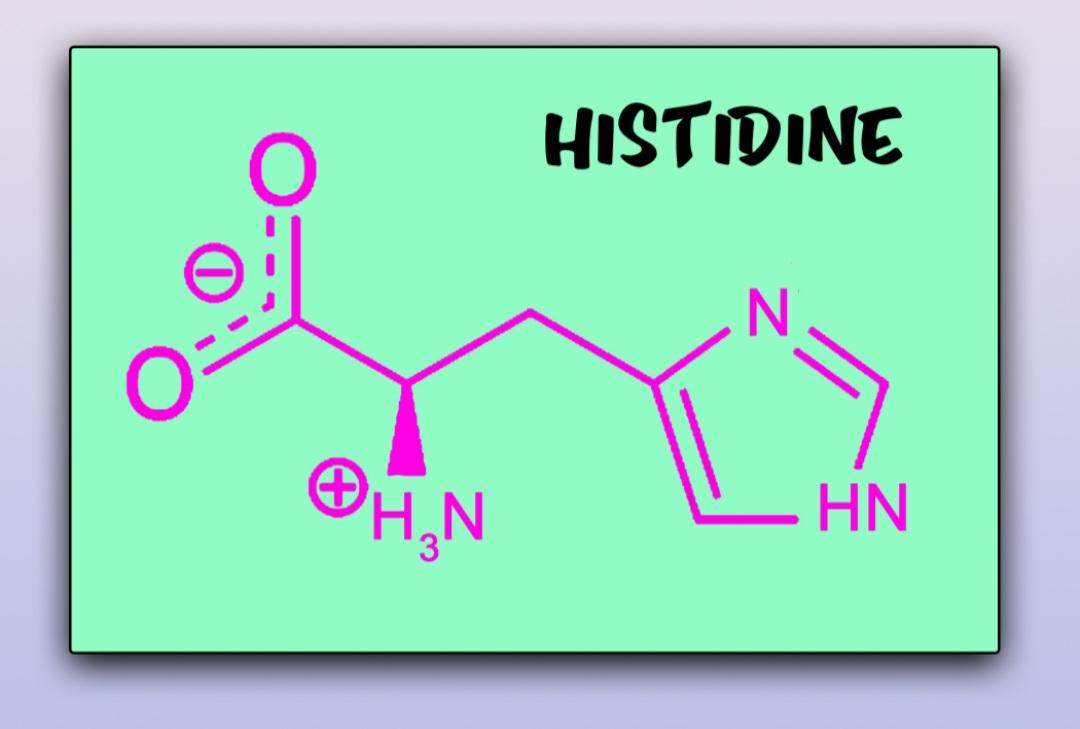
Answer
442.2k+ views
Hint: The most basic amino acid is an α-amino acid that is used in the biosynthesis of proteins. It contains an α-amino group, along with it a carboxylic acid group, and an imidazole side chain, classifying it as a positively charged amino acid at physiological pH.
Complete answer:
The most basic amino acid is Histidine. Glutamine and glycine aren't basic amino acids.

Only Arginine and Histidine are basic amino acids even out of these two, histidine is weakly charged under physiological ph.
Additional Information: Histidine is one of that type of amino acids that can be converted to intermediates of the tricarboxylic acid (TCA) cycle. Histidine, along with some other amino acids such as proline and arginine, will take part in deamination, which is a process in which its amino group is removed. In the prokaryotes, it was seen that histidine is first converted to urocanate by histidase. Then, urocanase converts urocanate to 4-imidazolone-5-propionate. The Imidazolonepropionase is an enzyme that will help in catalyzing the reaction to form formiminoglutamate from the 4-imidazolone-5-propionate. The formimino group is transferred to tetrahydrofolate, and the remaining five carbons form the product which is commonly known as glutamate. These reactions will result in the formation of glutamate and ammonia. The glutamate can then be deaminated by glutamate dehydrogenase or transaminated to form α-ketoglutarate.l-Histidine, is an important amino acid that's not synthesized de novo in humans. Humans and other animals must ingest histidine or histidine-containing proteins. The biosynthesis of the histidine has been majorly studied in prokaryotes like E. coli.
So, the correct answer is ‘(B) Histidine’.
Note: Histidine was first isolated by the German physician Albrecht Kossel and Sven Gustaf Hedin in 1896. It's also a precursor to histamine, an important inflammatory agent in immune responses. The acyl radical is histidyl.
Complete answer:
The most basic amino acid is Histidine. Glutamine and glycine aren't basic amino acids.

Only Arginine and Histidine are basic amino acids even out of these two, histidine is weakly charged under physiological ph.
Additional Information: Histidine is one of that type of amino acids that can be converted to intermediates of the tricarboxylic acid (TCA) cycle. Histidine, along with some other amino acids such as proline and arginine, will take part in deamination, which is a process in which its amino group is removed. In the prokaryotes, it was seen that histidine is first converted to urocanate by histidase. Then, urocanase converts urocanate to 4-imidazolone-5-propionate. The Imidazolonepropionase is an enzyme that will help in catalyzing the reaction to form formiminoglutamate from the 4-imidazolone-5-propionate. The formimino group is transferred to tetrahydrofolate, and the remaining five carbons form the product which is commonly known as glutamate. These reactions will result in the formation of glutamate and ammonia. The glutamate can then be deaminated by glutamate dehydrogenase or transaminated to form α-ketoglutarate.l-Histidine, is an important amino acid that's not synthesized de novo in humans. Humans and other animals must ingest histidine or histidine-containing proteins. The biosynthesis of the histidine has been majorly studied in prokaryotes like E. coli.
So, the correct answer is ‘(B) Histidine’.
Note: Histidine was first isolated by the German physician Albrecht Kossel and Sven Gustaf Hedin in 1896. It's also a precursor to histamine, an important inflammatory agent in immune responses. The acyl radical is histidyl.
Recently Updated Pages
Write the IUPAC name of the given compound class 11 chemistry CBSE

Write the IUPAC name of the given compound class 11 chemistry CBSE

Write the IUPAC name of the given compound class 11 chemistry CBSE

Write the IUPAC name of the given compound class 11 chemistry CBSE

Write the IUPAC name of the given compound class 11 chemistry CBSE

Write the IUPAC name of the given compound class 11 chemistry CBSE

Trending doubts
Fill the blanks with the suitable prepositions 1 The class 9 english CBSE

Which are the Top 10 Largest Countries of the World?

How do you graph the function fx 4x class 9 maths CBSE

Distinguish between the following Ferrous and nonferrous class 9 social science CBSE

The term ISWM refers to A Integrated Solid Waste Machine class 10 social science CBSE

The Equation xxx + 2 is Satisfied when x is Equal to Class 10 Maths

Difference between Prokaryotic cell and Eukaryotic class 11 biology CBSE

Which is the longest day and shortest night in the class 11 sst CBSE

In a democracy the final decisionmaking power rests class 11 social science CBSE




